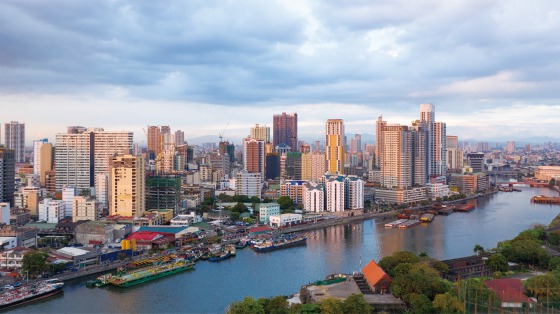【マニラの中華街ビノンドを歩いてみれば】ミスター・ビノンド 変貌する街を見つめて思うこと。
EXPLORING MANILA’S CHINATOWN BINONDO
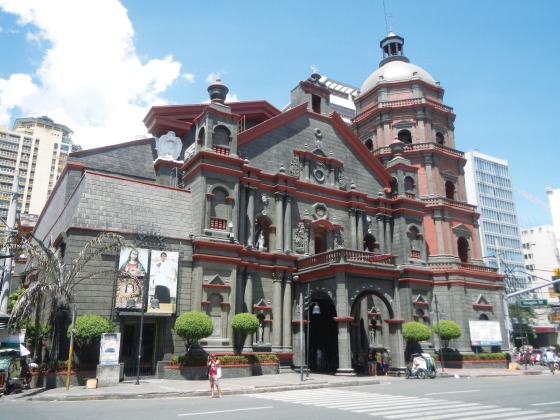
Wikimedia Commons Public Domain
ビノンドという街の成り立ち、そして変遷について、ビノンド生まれビノンド育ち
ビノンド在住の「ミスター・ビノンド」アンソン・ユウ氏に聞きました。
Born, raised and residing in Binondo, ‘Mr.Binondo’ Anson Yu talks about the history,
changes and development of Binondo.
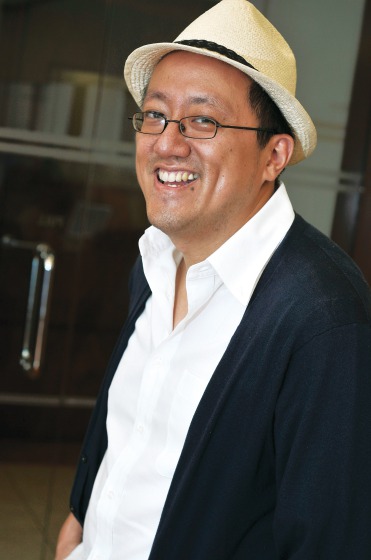
アンソン・ユウ(尤 澤淵)さん ジャーナリスト・写真家。『Chinese-Filipino Digest Tulay』紙等に寄稿。マニラ歴史散策や食べ歩きツアー「Old Manila Walks」のガイドも務める。1930年に中国・福建省から移住した祖父とフィリピン華人の両親を持ち、タガログ語、英語、福建語、中国語普通話を話す。 Anson Yu, a.k.a Mr. Binondo is a journalist and photographer, contributing to ‘Chinese-Filipino Digest Tulay’ newspaper etc. and conducts a history walk and dining tour ‘Old Manlia Walk.’ Mr. Yu is a third generation of Chinese Filipino of Hokkien descent and speaks Tagalog, English, Hokkien and Mandarin.
中国人が商才を育んだ地
フィリピンと中国との間の貿易は、9世紀の宋王朝時代の陶磁器の貿易までさかのぼります。中国からの移民はスペイン統治時代に増え、パッシグ川沿いのパリアン(The Parian)と呼ばれる地区に隔離されていました。そして1594年にスペイン政府がカトリック信者の中国人居住区として建設したのが、ビノンドです。ビノンドという名前は古いタガログ語で丘陵を意味するBinundokに由来します。
在住中国人の人口は、1903年には4万1,035人、その後1921年5万5,212人、1933年7万1,638人、そして、日中戦争の影響により1935年11万0,500人、1939年13万人へと増えていきます。多くは中国南東部の福建省泉州、晋江(しんこう)からの移民でした。
現在、フィリピン華人の人口は約120万人、そのうち約50%はマニラ在住といわれます。言語グループ別では福建系80%、広東系10%、あと10%は不明とされています。
東南アジアのほかの国同様、フィリピンでも華人系の大企業が多くあります。中国人の商才を育んだのは、私はスペイン、そして米国よる統治時代にあると考えています。当時中国人が就ける職業は、原則として商人だけであり、中国人はフィリピン全土に流通網を築くことができたのです。富裕層のフィリピン人は農園の経営に注力し、中国人が手がけるビジネスには関心がありませんでした。成功したフィリピン人実業家もいますが、中国人実業家の数には及びません。
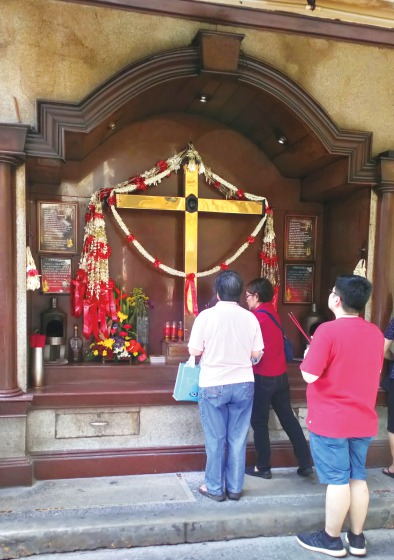
ビノンドのトマス・ピンピン通りにある礼拝所サント・クリスト・デ・ロンゴス。中華系フィリピン人の多くはカトリックであり、十字架に向かい、中国寺院で見られる長い線香を手に拝み、十字を切る。キリスト教と仏教の融合が見られるスポット。 At Sto. Cristo de Longos on Tomas Pinpin Street, Chinese Filipino Catholics hold long Chinese incense sticks and pray to the cross.
ちなみに、ビノンドに限らず、中華街に行くと同業の店が同じ通りに軒を連ねるのを見たことがありませんか? 例えばビノンドでは、 オンピン通り辺りには金や宝飾を扱う店が多くあり、サビノ・パディラ通りに事務用品の店が並び、トマス・ピンピン通りには家具店が集まっている。これは、中国人の商人が意識的に出店したからです。競合店が何をやっているかを監視し、来客が他店と値段を比べやすくするため、同業他社の近くでビジネスを行うのです。
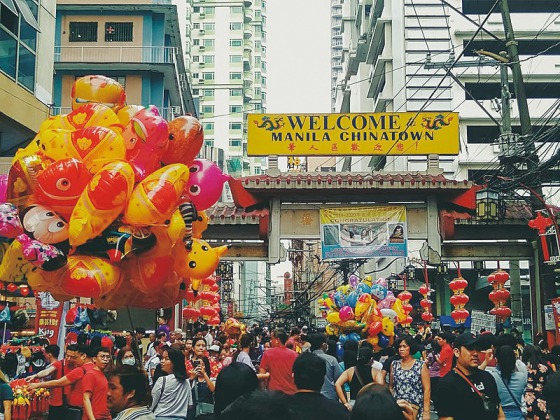
多くの人でにぎわうビノンド(2020年)Chinese New Year in Binondo, Manila in 2020 (Wikimedia Commons CC BY-SA 4.0, Ralff Nestor Nacor)
Where the Chinese Nurtured Business Ability
Trading between the Philippines and China dates back to 9th century. The trading item was potteries of Sung dynasty. During the Spanish period, the number of Chinese immigrants increased and they were in the separated area called the Parian along the Pasig river. They were eventually moved to Binondo which was established for Catholic Chinese by the Spaniards. The name Binondo was named after an old Tagalog word, Binundok which means hilly terrain.
The Chinese population in the Philippines were 41,035 in 1903, 55,212 in 1921, and 71,638 in 1933, and surging in the late 1930s because of Sino- Japanese war, 110,500 in 1935 and 130,000 in 1939. Most of them were from Jinjiang and Quanzhou, Fujian Province of China.
The current population of Chinese Filipino is estimated about 1.2 million. By the dialect group, Hokkien is 80 %, Cantonese 10% and the rest 10 % is unknown.
In the Philippines, there are a lot of big companies founded by Tsinoys (Chinese Filipinos). During the Spanish and American colonial periods, ethnic Chinese were not allowed to practice careers other than in commerce. Because of this, the Chinese developed extensive distribution networks across the country. The higher income group among the Filipinos did not bother as they preferred managing their plantation. There were some successful Filipino manufacturers, but there were not that many compare to the Chinese community.
In Binondo or other Chinatowns, you would notice certain business clustering on certain streets. For example, Sabino Padilla St. is known for office suppliers, while Tomas Pinpin St. is where you will find furniture sellers. It’s because Chinese businesses have always wanted to be near their competitors to keep an eye on what they are doing as well as make it easier for buyers when they compare prices.
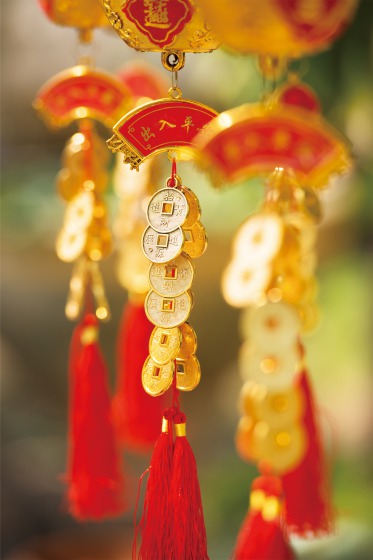
建物、人、様変わりした街
私は1969年にビノンドで生まれ、育ちました。子どものころは、まだどの道にもカレッサ(馬車)が見られ、住民が集まって京劇を鑑賞する光景がみられました。今はどころどころに高層ビルが建ち、景観も大きく変わりました。オフィスビルにコンドミニアム、そして最近は、無機質な外観に小さな窓があるだけの高層の倉庫も建っています。 ビノンドの住人にも変化があり、中国本土からの移民が増えました。以前は福建省泉州市、厦門(アモイ)市からの移民が多かったのですが、今は中国各地から来ている。中国本土からの食品を扱う店や、中国料理店など地元客よりも中国本土からの移民の好みに合わせた店も増えています。
パンデミックが始まってから、ビノンドにはEコマースの受け取り所や、宅配業者の窓口がめだつようになり、多くのレストランも出前をするようになりました。「お金を稼ぐことがすべて」というビノンドに生きる精神は、コロナ禍の前も今も変わっていませんね。
ビノンドは、そこに生きる人々の生活の場です。ビノンドで暮らし、子どもを育て、年輪を重ねる人々のコミュニティそのものです。
Change, Transition and Development
I was born in Binondo in 1969 and brought up in Binondo. When I was a kid, calesas (horse carriages) could still be found on the streets and residents would gather to watch Chinese opera troupe performing on the street. One of the more obvious changes in Binondo is the skyline.
Today there are more high-rise buildings of office buildings, condominiums and multi- story warehouses with plainer look and small windows. Another change is the people in the community. Newer migrants from China are more visible now. Whereas before most were from Quanzhou or Xiamen, many of the new migrants are now from other parts of China. You can see that there are now more groceries around Binondo that offer goods from Mainland China. There are also restaurants that cater more to the taste of the new migrants than to the locals.
In spite of the pandemic, Binondo is still all about making money. I now see a lot more drop off centers for e-commerce businesses and courier firm branches around Binondo as well. Many of the restaurants offer delivery service.
Binodo is a living community where people actually live, raise kids and grow old.
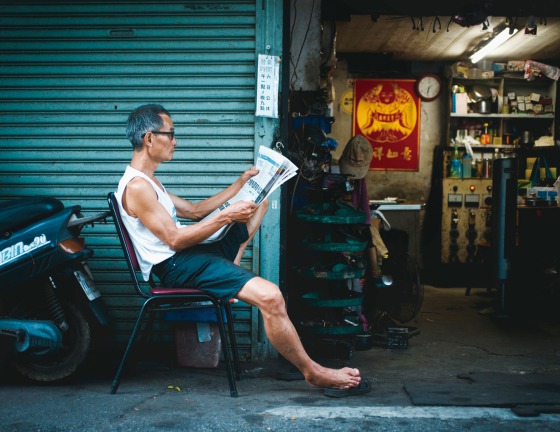
古くて新しいユニークな存在
私は海外へ行くと、その地元の中華街を訪れることにしています。バンコク、シンガポール、横浜、韓国の仁川、オーストラリアのパース、米国サンフランシスコ、ニューヨーク、バンクーバー、ロンドン……。中でも印象に残っているのは横浜です。日本と中国の建築様式がミックスした建物が醸し出す独特の雰囲気があります。観光客向けの中華街という感じではありますが。華人コミュニティについて知るなら東京の池袋がいいと聞いたので、いつか行ってみたいと思っています。バンコクの中華街はビノンドに似た雰囲気がありました。観光客でにぎわっていましたが、そこに住む人々の暮らしを見ることができました。
この先もビノンドは、マニラの中華街というユニークな存在であり続けてほしい。ビノンドに暮らす人々が、ビノンド教会前に広がる広場プラザ・ロレンソ・ルイスや、サンニコラスの古い家屋といったビノンドのランドマークを大切にしていかなくてはなりません。過去と現在、古いものと新しきものが共存するビノンドであり続けてほしいと思うのです。
Mixture of the Old and New
Whenever I travel abroad, I try to check out what the local Chinatown is like. Among those that I have visited include Yokohama, Incheon, New York City, Bangkok, Singapore, London, Perth, Vancouver, and San Francisco. The most impressive in terms of appearance would be Yokohama. It stands out because of its architecture and its mix of Japanese and Chinese culture. But to me it seems to exist mainly for tourists. Though I read somewhere that if I want to connect with the Chinese community in Japan, I would have to go to Ikebukuro in Tokyo instead. Another Chinatown that stood out for me is Bangkok. It is the one that most reminds me of Manila’s Chinatown. Even if it is full of tourists, you can still sense that it is a living community.
I do hope that in the future Binondo is a unique Chinatown in Manila and the people of Binondo will also see for themselves the uniqueness of their Chinatown. This means taking better care of the various landmarks that makes Binondo unique like the Plaza Lorenzo Ruiz or the old houses in San Nicolas sub district. But this doesn’t mean we get stuck in the past. I wish Binondo continues to be a town with rich history and vibrant modernity.
